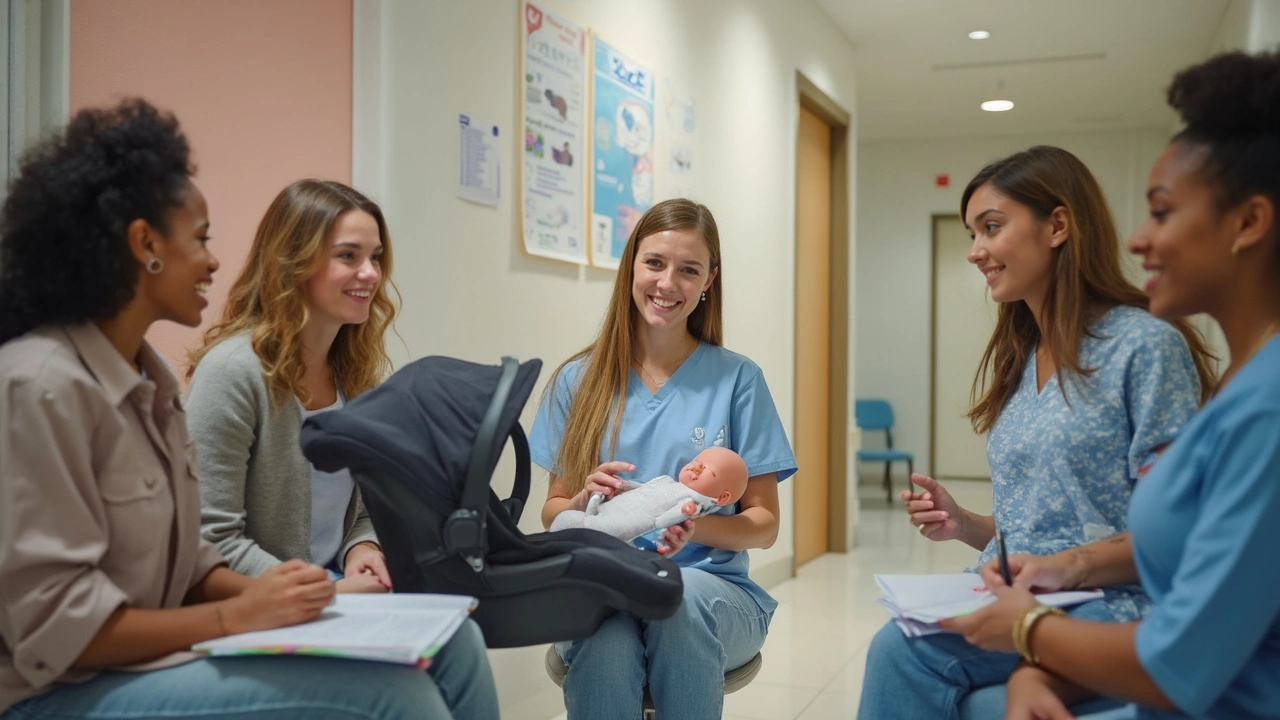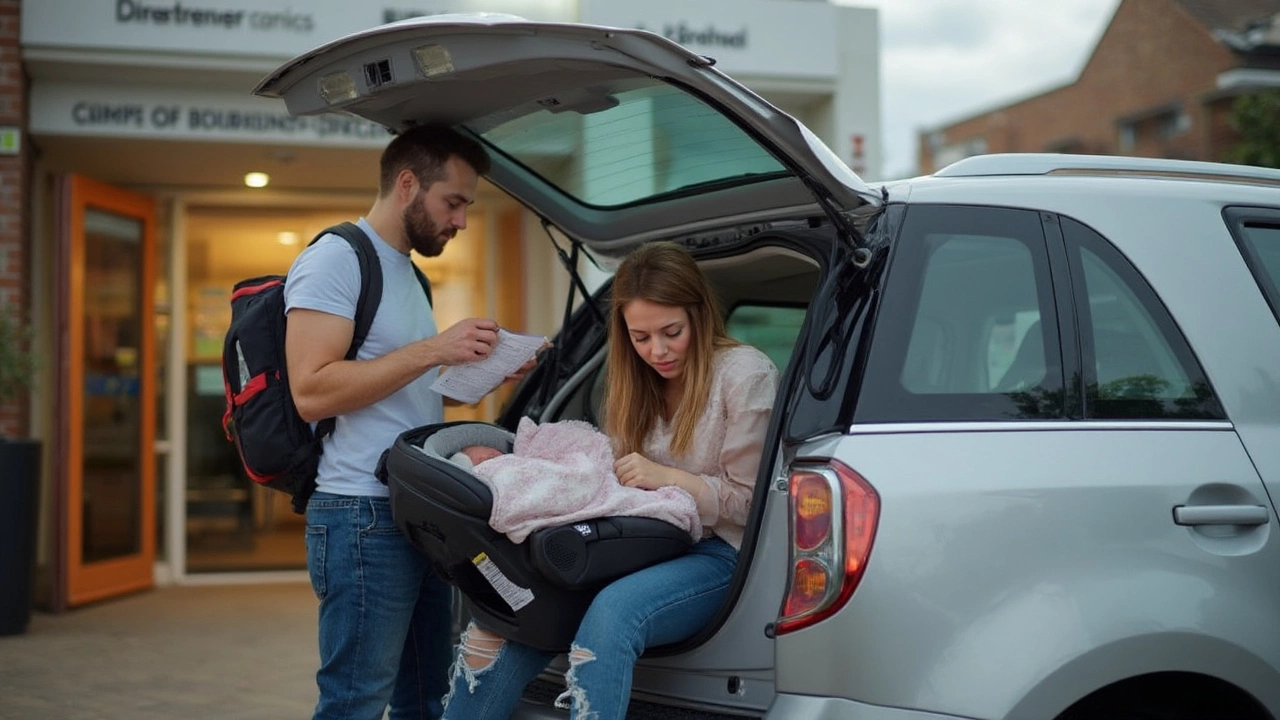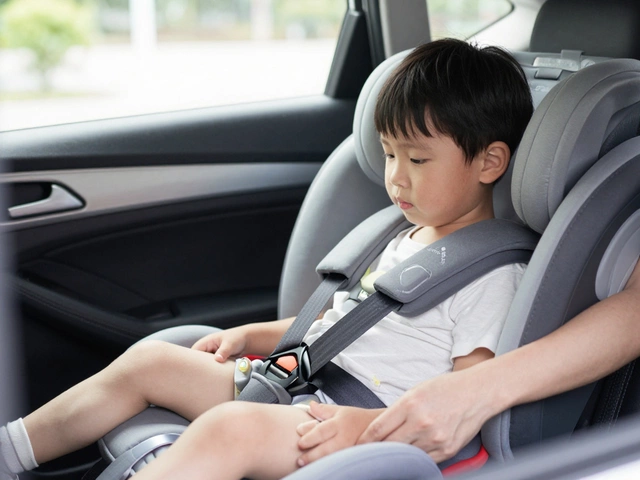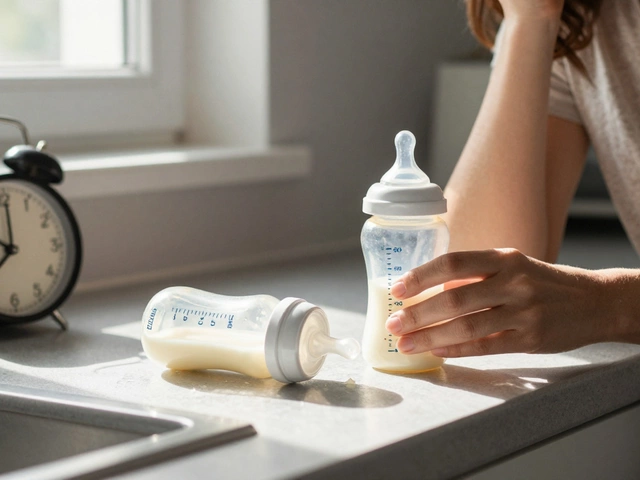
The moment your baby is cleared to go home, you might wonder if the hospital is going to hand you a brand-new car seat, or if that’s just wishful thinking. Here’s the short answer: hospitals almost never provide a car seat to families after birth. You need to bring your own—no exceptions in most places.
Believe it or not, hospitals actually can’t let you drive off without showing that your baby will ride safely. In the U.S., it’s the law in every single state: newborns must leave the hospital in a federally approved car seat. Nurses will watch you buckle your baby in, right in the hospital room or sometimes even in the car outside, just to be sure you’re set up safely.
If you’re shocked and thought hospitals had a closet full of loaner seats, you’re not alone. A surprising number of new parents (me included, on my first round with Sorrel) learned this at the last minute. Hospital staff may have emergency backup seats for very rare cases—say, if you arrive by ambulance and truly can’t source one—but this is not standard, and you cannot depend on it happening.
- What Do Hospitals Actually Provide?
- Car Seat Laws and Hospital Policies
- Why Hospitals Won’t Supply Car Seats
- What Parents Should Prepare Before Delivery
- Checklist: Picking and Installing the Right Car Seat
- Tips for a Smooth Hospital Discharge
What Do Hospitals Actually Provide?
If you’re planning to roll out of the hospital with more than just a new baby, don’t expect to add a car seat to your haul. Hospitals usually do not give out or loan car seats after birth. It’s not included in your delivery bill, no matter how much the final number stings. They see car seats as your responsibility, right up there next to bringing a diaper bag and an outfit for the ride home.
That being said, hospitals actually do provide a lot of support when it comes to car seat safety. Most maternity wards have nurses or staff who are trained in newborn transport rules. Some hospitals even offer a quick car seat check before you leave, just to be sure your install job isn’t wobbly or unsafe. But what exactly DO they hand out?
- Newborn supplies: Diapers, ready-to-feed formula (if needed), and sometimes a baby blanket or hat.
- Breastfeeding help: Lactation consultants or informational pamphlets.
- Pediatrician contact: Details for your baby’s first checkup.
- Discharge paperwork: Birth certificate forms and medical instructions.
- Instructions for safely putting your baby in the car seat you brought.
Don’t get your hopes up for freebies beyond these basics. In very unusual situations—like if you arrive in a real crisis and don’t have one—some hospitals might connect you with a local charity or loaner program. But this takes time, paperwork, and definitely isn’t a guarantee on the spot.
| Item Provided by Hospital | Usually? |
|---|---|
| Car Seat | No |
| Diapers | Yes |
| Blanket/Hat for Baby | Sometimes |
| Lactation Support | Yes |
| Car Seat Safety Tips | Yes |
| Formula (if needed) | Yes |
The most important thing you’ll need—your car seat—should be ready, installed, and waiting for you before you even meet your baby. Hospitals really want you to succeed at this, but they expect you to show up with what the law requires.
Car Seat Laws and Hospital Policies
Every state in the U.S. has strict rules about car seat use, especially for newborns. It’s not just a hospital thing—it's the law. States usually require infants to ride in a car seat that faces the rear of the car, meeting federal safety standards. The hospital’s job is to make sure you follow this rule before you leave. They’re not being nosy—they just want your little one out of danger from the very start.
Most hospitals do what’s called a "car seat check" before letting a baby head home. This means a nurse, or sometimes a trained car seat technician, will watch you buckle your baby into their car seat. They’re looking to see that the harness straps are at the right level, that there’s no loose clothing or extra padding, and that the seat is installed properly in your car, usually in the back seat.
These checks aren’t optional. Hospitals can’t allow a newborn to leave in a parent’s arms, in a stroller, or in any way other than securely buckled into an approved car seat. Skipping the seat just isn’t on the table. If you forget your car seat or it isn’t safe, hospital staff will ask you to arrange one before discharge. In places with extremely low-income families, some hospitals partner with local agencies or donated programs to provide discounted or free seats, but this takes planning and paperwork—it’s not something that just happens at checkout.
So, to sum it up: the law says you need a proper car seat, and hospitals back this up by checking your setup before you drive off. They’re serious about it because the first ride home is one of the most dangerous trips your baby will ever face, safety-wise. Don’t leave packing your car seat to the last minute. Make sure you know how to use it long before delivery day.
Why Hospitals Won’t Supply Car Seats
This might sound harsh, but there are good reasons hospitals don’t just hand out car seats when you’re leaving with your newborn. The big one: car seats are not one-size-fits-all, and hospitals can’t guarantee a proper fit for every baby and every car. Plus, safety rules are strict, and liability risks are real. If a hospital gave you a seat and something went wrong, legally, things could get messy fast.
Here are a few clear reasons why the car seat is your responsibility:
- Car seat types vary: Infants need rear-facing seats, but even in that category, there are dozens of models and sizes. The seat must match your child's weight and fit safely in your vehicle.
- Recalls and expiration dates: Hospitals can’t keep track of hundreds of seats to make sure none are recalled or expired. A seat past its expiration date (usually 6–10 years from manufacture) isn’t legal or safe.
- Cleanliness and hygiene: Hospitals can’t guarantee car seats are completely clean and germ-free, especially in a baby unit where immune systems are weak.
- Cost: Outfitting every new family with a safe, new car seat is expensive. Over 3.6 million babies are born in U.S. hospitals each year—multiply that by car seat prices and you see why this isn’t doable.
- Legal and insurance stuff: If an accident happens with a hospital-provided seat, the hospital could be liable. Not worth the risk.
Take a look at the numbers:
| Reason | Detail |
|---|---|
| Recalls/Expiration | Seats must be replaced after 6-10 years; 3M+ babies/month means tons of seats to track |
| Cost | Average infant car seat: $110–$250 (2024 data); not sustainable for hospitals |
| Liability Risk | Potential lawsuit if hospital-supplied seat fails |
| Correct Fit | Dozens of car-seat models but every car/baby combo is different |
The bottom line: Hospitals will check that you have a safe seat, but the choice, purchase, and bringing it with you? That’s all on you.

What Parents Should Prepare Before Delivery
If you’re expecting, one thing that can’t wait until after the baby arrives is picking out and installing your car seat. Hospitals almost always require you to bring your own car seat—not having one could delay your trip home, or make things way stressful during discharge.
Here’s what you need to line up before labor even starts:
- Car seat: Buy a brand new, federally approved infant car seat. Check the label for the FMVSS 213 sticker—it’s required in the U.S.
- Installation: Practice putting the seat in your car before the big day. Mistakes are common—according to the National Highway Traffic Safety Administration, 46% of car seats are installed incorrectly.
- Familiarity: Know how to adjust the straps and harness for a snug fit. At the hospital, you’ll need to show staff you can safely secure your newborn.
- Manuals: Keep the car seat manual in your glove compartment. It saves a ton of hassle if you need to make last-minute adjustments.
- Weather Preparedness: If the baby’s due in winter, pack a blanket or car seat cover, not bulky coats. Big coats aren’t safe for car seats.
A lot of parents wonder if they can just use a hand-me-down or a seat from a friend. The answer: only if it’s never been in a crash, isn’t expired, and you know its full history. Car seats have a shelf life—usually six years. Check for cracks or missing parts.
| Fact | Details |
|---|---|
| Proper Installation | 46% installed incorrectly (NHTSA, 2023) |
| Expiration | Standard shelf life is 6 years |
| Loaner from Hospital | Rare, emergency cases only |
| Legal Requirement | All 50 states and DC require an approved car seat for newborns leaving the hospital |
Give yourself time to practice. You don’t want to be wrestling with straps in a hospital parking lot with a newborn and zero sleep. Some fire departments or local police stations offer free car seat checks—totally worth it for peace of mind.
Checklist: Picking and Installing the Right Car Seat
Don’t make the rookie mistake of grabbing just any baby seat off the shelf. You need a car seat that fits your baby, your car, and the laws in your state. Here’s how to make sure you’re set up for that first ride—no stress, no last-minute panic.
- Pick a rear-facing car seat for your newborn. That’s the law in all 50 states. Rear-facing is safest and protects their head, neck, and spine.
- Go for a seat that fits your baby’s current size—most infant car seats work for babies from 4-35 lbs. Check your hospital’s discharge weight policy to be sure.
- Make sure the seat is not expired. Yes, car seats have an actual expiration date. Most last 6-10 years from the manufacture date (look for the sticker on the seat).
- Don’t use a seat if it’s been in a crash, no matter how minor. Crash forces can make parts fail—even if you can’t see cracks.
- Register your car seat with the manufacturer so you'll get safety recall alerts.
“Every year, about half of car seats installed by new parents aren’t done correctly. It’s not just about buckling—it’s making sure everything’s in the right spot, tight enough, and at the right angle.” — National Highway Traffic Safety Administration (NHTSA)
Now, let's see the basics for a safe and legal install. Here’s a practical step-by-step:
- Read both your car seat and vehicle manual. They really do have specific instructions—like seat angles or belt paths—that matter.
- Pick a seat in the back, never the front (airbags can cause injuries).
- Install using either the seat belt or LATCH system (Lower Anchors and Tethers for Children), not both unless your car seat says that's okay.
- The base shouldn’t move more than 1 inch side-to-side or front-to-back when pulled at the belt path. If it wiggles, it’s not secure enough.
- Angle the seat as shown in the manual so your baby’s head doesn’t flop forward—newborns need to breathe easily.
- Strap baby in snug—harness should be at or below shoulder level and you shouldn’t pinch any slack at the collarbone.
Here’s a quick table with popular car seat weight and height limits (always check your seat's own info):
| Brand | Weight Range | Height Range |
|---|---|---|
| Chicco KeyFit 30 | 4-30 lbs | Up to 30" |
| Graco SnugRide 35 | 4-35 lbs | Up to 32" |
| UPPAbaby Mesa | 4-35 lbs | Up to 32" |
| Britax B-Safe Gen2 | 4-35 lbs | Up to 32" |
If you’re not sure about your install, many local fire departments and car seat techs will help you double-check for free or a small fee. That’s one appointment you won’t regret booking.
Tips for a Smooth Hospital Discharge
There’s a lot going on in those last hours before you pack up with your newborn. The big thing no one wants is a delay just because of a missing or badly installed car seat. A little prep before delivery will save so much hassle later.
- Bring your car seat to the hospital before you check in or while in labor—early is better. Don’t leave it till the last minute when your mind is on a million other things.
- Install the seat in your car at least a week before your due date, if you can. Test it with a rolled up towel or stuffed animal so you can practice buckling and know where everything connects.
- Take advantage of free car seat checks at local fire stations or baby stores. Certified techs will double-check if your car seat is secure and help you fix any trouble spots (like twisted straps or loose bases).
- Have someone who isn’t exhausted double-check the seat install, ideally your partner or a good friend. Trust me, spotting and fixing little mistakes gets way harder after staying up all night with a newborn.
- Before check-out day, tell the nurse you have your car seat. Some hospitals send someone down with you for a car seat check at the curb; others do it in the room. Don’t be shy about asking if you’re not sure how your hospital handles it.
- If you’re using a ride service or taxi, most won’t provide car seats, so have your own seat ready. You can quickly attach most infant seats with a seatbelt if the base isn’t practical (just follow the manual).
Don’t forget, your car seat isn’t just a box to check for leaving the hospital. This is about keeping your baby safe from that very first car ride home. A little planning means you’re heading out with peace of mind—and way fewer last-minute headaches.






